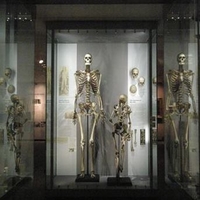When Women Birthed Mooncalves and Moles
The Display of Fetal Remains and the Invisibility of Females in Museums
DOI:
https://doi.org/10.52537/humanimalia.10030Abstract
The Hunterian Museum, part of the Royal College of Surgeons in London, England, is unique in that its displays are focused on the anatomical collections of 18th century surgeon John Hunter, and today the museum is designed to exhibit Hunter’s collections in the way he would have at that time. As such, humans and animals are unusually displayed in the same galleries, and this includes a large number of wet-preserved human and animal fetal bodies. Significant work has been done within feminist studies of science to examine the politics around the icon and visibility of the human fetus, and on how the fetus has become the primary actor in the origin stories of contemporary Western society. However, the critical investigation of animal fetal bodies and their role in this origin story appears absent altogether, and little work has been carried out on how foetal display in museums essentially renders females of all species invisible.
Downloads

Downloads
Published
Issue
Section
License

This work is licensed under a Creative Commons Attribution-NonCommercial 4.0 International License.


